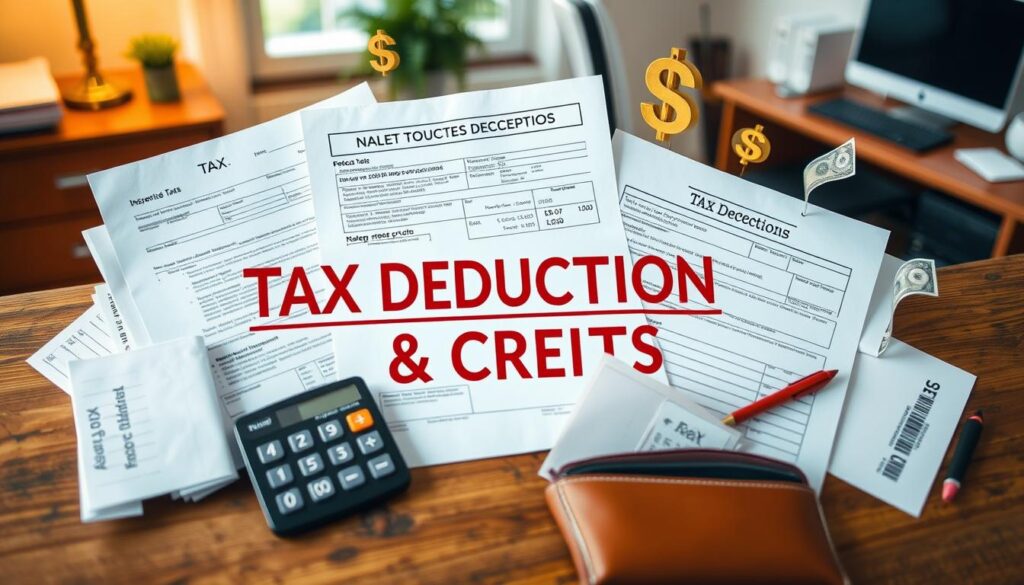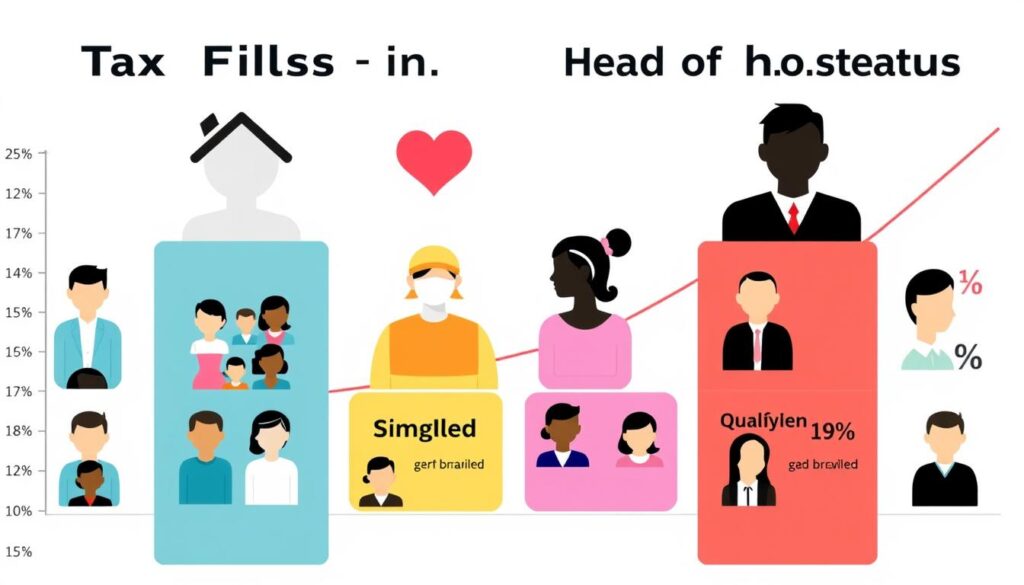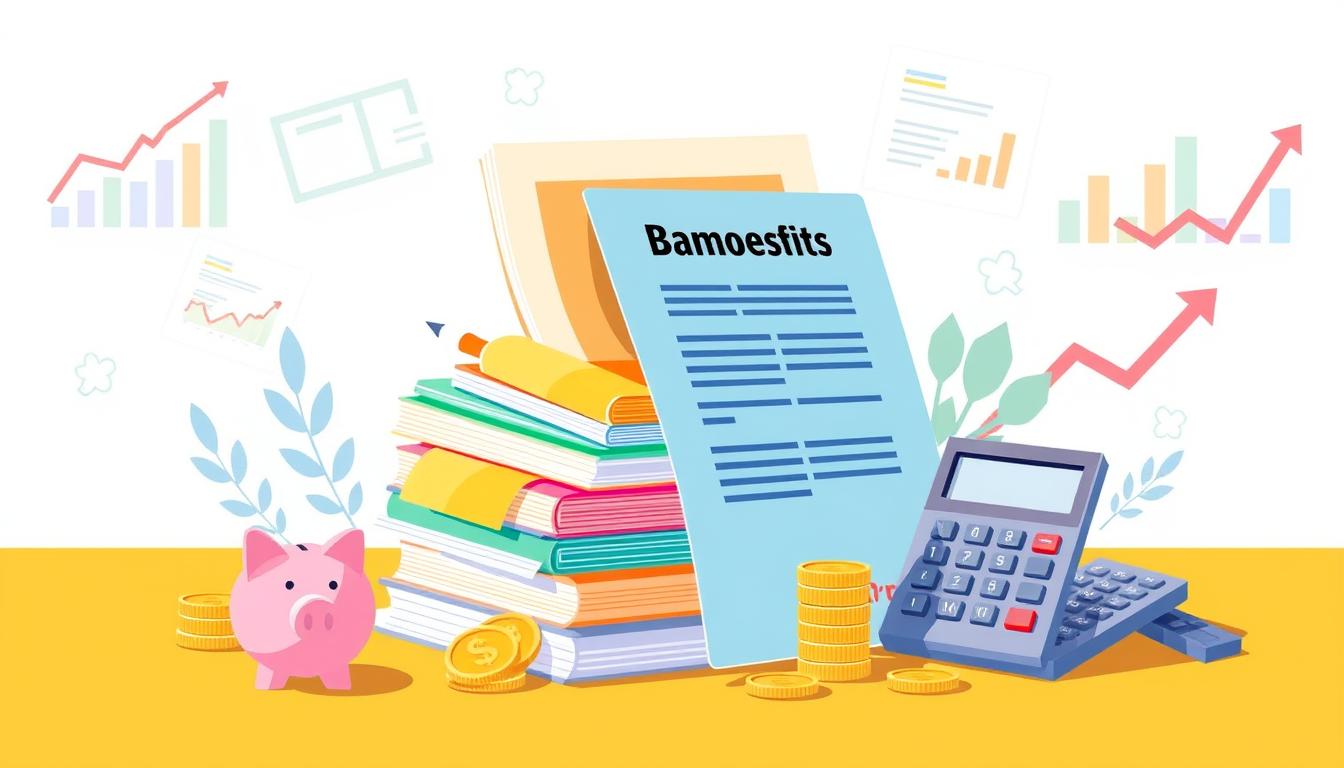As tax season rolls around, you might feel a blend of anxiety and overwhelm. You’re not alone. Almost everyone has faced that daunting stack of documents and forms, wondering how to make sense of it all. The good news? With the right approach to tax preparation, you can turn what feels like a financial maze into a straightforward path toward maximizing your tax deductions and securing those much-deserved tax refunds. Effective tax planning is not just about crunching numbers; it’s about providing you with peace of mind and the knowledge that you’re doing everything correctly, paving the way for a smoother tax filing experience. In this guide, we will equip you with tips that can simplify your journey through the world of taxes, ensuring you’re well-prepared and confident. Let’s dive into the essentials that will make tax preparation seem a lot less intimidating and more manageable1.
Key Takeaways
- Tax preparation can significantly reduce stress during filing season.
- Understanding key documents is crucial for effective tax filing.
- Tax preparation software can streamline the filing process.
- Knowing your filing status can maximize your deductions.
- Being aware of deadlines helps in avoiding penalties.
- Various resources are available to assist with tax preparation.
1. Understanding Tax Preparation Basics
Tax preparation is an essential process involving the compilation and filing of your tax returns accurately and timely. To navigate tax filing effectively, you need to gather various pertinent documents, such as income information and eligible deductions. Understanding taxes helps you ensure compliance, optimize your financial situation, and avoid penalties or missed refunds.
What is Tax Preparation?
At its core, tax preparation includes all activities related to organizing financial information, determining liabilities, and completing necessary forms for submission to tax authorities. Various professionals assist in this process, including Enrolled Agents, Certified Public Accountants (CPA), and tax preparers working under the Annual Filing Season Program (AFSP)2. The standard deduction for single taxpayers in 2021 was $12,550, whereas for married taxpayers filing jointly, it was $25,1003. This highlights the importance of tax preparation, as such deductions can significantly impact your tax liability and refund potential.
Why is Tax Preparation Important?
Understanding tax preparation can provide you with several financial benefits. Accurate tax filings can result in various tax credits, such as the Earned Income Tax Credit, which offered a maximum credit of $6,728 for filers with three or more qualifying children in 20213. Furthermore, the American Opportunity Tax Credit (AOTC) provided a maximum $2,500 credit to qualifying taxpayers, while the Child and Dependent Care Tax Credit was capped at $3,000 for one qualifying dependent or $6,000 for two in 20213. Refundable tax credits can sometimes lead to refunds exceeding your tax obligations, enriching your financial position3. Ultimately, mastering tax preparation facilitates informed financial decisions and promotes overall well-being.

2. Key Documents You Need to Gather
Before you start your tax filing journey, it is essential to gather all necessary documents for a smooth process. Being organized will aid in ensuring you report your income accurately and can capitalize on applicable tax deductions.
W-2 Forms
The W-2 forms are crucial as they report your wages and the taxes withheld by your employer. Employers are required to issue or mail W-2 forms to you by January 314. This document provides detailed information on your earnings, making it an essential part of your tax forms.
1099 Forms
In addition to W-2s, you may receive various 1099 forms if you have additional income sources, like freelance work or investments. Many types of 1099 forms, including 1099-NEC, 1099-MISC, and 1099-INT, are issued between January 31 and mid-February4. These forms provide necessary details for reporting your earnings accurately.
Receipts and Deductions
Maintaining organized receipts related to deductions can significantly reduce your taxable income. For instance, you can deduct up to $300 for classroom supplies if you’re an eligible educator4. Keep records of charitable donations to validate your claims as well. You should also consider documents for other deductible expenses such as medical bills and contributions to retirement accounts like 401(k)s or IRAs5.
Other Important Records
Other vital records include prior tax returns and any statements related to investments. Additionally, forms like 1098 provide information on property taxes and mortgage interest, which can also be deducted5. Keeping these documents organized is key for a stress-free tax preparation experience.

3. Choosing Between DIY and Professional Help
Making a choice between DIY tax preparation and hiring a tax professional requires careful consideration. You may find that each option has its distinct advantages and disadvantages based on your individual circumstances. An understanding of these factors will help you make the best decision for your tax situation.
Pros and Cons of DIY Tax Preparation
DIY tax preparation offers several benefits. It allows for significant cost savings; individuals can save approximately 50% on average when using DIY tax software rather than hiring a professional6. About 40% to 60% of individuals opt for DIY preparation, especially if their financial situations are relatively straightforward6. However, it comes with risks. Errors in DIY tax preparation can occur at rates of 20% to 30% without professional guidance, potentially leading to costly mistakes6.
When to Hire a Tax Professional
Choosing to engage a tax professional can be a wise option if your financial situation is more complex. Research indicates that approximately 70% to 90% of individuals with multifaceted financial circumstances tend to seek professional tax assistance7. Tax professionals save individuals between 2 to 4 hours of work when handling complex scenarios, enabling you to concentrate on other aspects of your life7. Furthermore, having a professional can enhance the likelihood of uncovering all eligible deductions, credits, and incentives you may not be aware of, which can lead to substantial financial benefits8.

| Factor | DIY Tax Preparation | Tax Professional |
|---|---|---|
| Cost | Approx. 50% savings vs. professional | Hourly rate: $150 – $300 |
| Error Rate | 20% – 30% without guidance | Lower risk for complex cases |
| Time Savings | Variable, depends on familiarity | 2 – 4 hours saved for complex finances |
| Comfort Level | 30% – 50% of straightforward situations | 70% – 90% of complex situations |
By weighing the benefits and challenges of DIY tax preparation against the value of tax services provided by professionals, you will be better equipped to make a decision that aligns with your financial goals8.
4. Common Tax Deductions and Credits
Understanding the landscape of tax deductions and credits can often lead to significant savings on your tax return. Choosing between the standard deduction and itemized deductions plays a crucial role in determining your taxable income. Knowing which tax credits to explore may add even more financial relief to your situation.
Standard vs. Itemized Deductions
The standard deduction offers a flat-rate reduction in taxable income, which varies based on your filing status. For example, it’s $13,850 for single filers, $27,700 for married couples filing jointly, and $20,800 for heads of households9. This is often the simplest option, as it requires no additional documentation. On the other hand, itemized deductions allow for specific deductible expenses to be tallied, including alimony payments, mortgage interest, and charitable contributions. If your total deductible expenses exceed the standard deduction amount, itemizing may be beneficial9.

Popular Tax Credits to Consider
There are several tax credits available that can help reduce your overall tax liability. The Child Tax Credit for 2024 provides up to $2,000 per child, with $1,700 being potentially refundable10. Another notable credit includes the Earned Income Tax Credit, which can range from $632 to $7,830 depending on individual circumstances and received income1011. The American Opportunity Tax Credit allows you to claim up to $2,500 for qualified educational costs10, whereas the Student Loan Interest Deduction permits up to $2,500 for interest paid on student loans11.
5. Understanding Tax Filing Status
Your tax filing status plays a crucial role in determining your tax rates and eligibility for various deductions and credits. The five tax filing statuses recognized in the United States include Single, Married Filing Jointly, Married Filing Separately, Head of Household, and Qualifying Surviving Spouse. Each of these statuses comes with its own rules and implications that can significantly influence your overall tax planning strategies.
Types of Filing Status
- Single: This status is suitable for individuals who are unmarried or legally separated and do not qualify for another status. It often results in higher tax rates compared to other filing options.
- Married Filing Jointly: Spouses combine their incomes and expenses on a single return. This option often provides a lower tax bill through higher standard deductions and additional credits.
- Married Filing Separately: This option is chosen by some couples, especially if one suspects income hiding or has tax liability issues. However, it may lead to higher tax rates and limited deductions.
- Head of Household: Unmarried individuals who provide more than half of the household support for a qualifying person typically use this status. It offers larger tax deductions and more favorable tax brackets.
- Qualifying Surviving Spouse: This status allows individuals who lost a spouse and support a child to file as if married jointly. This results in a higher standard deduction and better tax brackets.
Tips for Choosing the Right One
Selecting the appropriate tax filing status can substantially impact your tax liabilities. Here are some strategies to consider:
- Evaluate your marital status and living arrangements. Choose the status that typically yields the lowest tax.
- Consider the benefits of filing jointly if married, as this often lowers tax rates and increases deductions.
- If filing separately, assess potential disadvantages such as limited access to certain tax credits.
- For heads of households, ensure eligibility by confirming that you have dependents and cover more than half the household expenses.
- Utilize qualifying surviving spouse status if applicable, as it can provide significant tax advantages during the grieving period.

Understanding each tax filing status and utilizing the correct filing options can lead to better tax planning and minimized liabilities. Always review your situation each tax year as personal circumstances can change.
Be aware that single taxpayers generally pay tax at higher rates compared to those married filing jointly1213. Additionally, selecting the correct filing status is essential in comprehending how your tax liabilities may vary12.
6. Tax Preparation Software: A Helpful Tool
Tax preparation software has become an essential asset for both individuals and tax professionals. This software streamlines the tax filing process using user-friendly interfaces, automating calculations, and ensuring accurate compliance with tax laws. The benefits of using tax software are significant for anyone considering DIY tax preparation.
Benefits of Using Tax Software
One of the primary advantages of tax preparation software is its ability to optimize the process of preparing, organizing, and filing tax returns, which increases productivity for users14. The automated calculations integrated within these tools significantly reduce manual effort and potential errors, making it easier to stay compliant with the latest tax regulations14. Additionally, features such as e-filing enable seamless submission of tax returns to federal and state authorities, minimizing the risk of penalties for late submissions14.
- Client data management aids in organizing and storing customer information, which facilitates comprehensive tax analysis.
- Secure communication platforms enhance client collaboration, increasing transparency and involvement throughout the preparation process.
- Error reduction through precise calculations leads to fewer costly mistakes.
Top Tax Software Options
When evaluating tax preparation software, it is important to consider the variety of options available. You can find many tax software solutions tailored to meet specific user needs, with costs ranging from $0 to $7015. Additionally, many companies collaborate with the IRS to provide free web-based tax preparation services for those with an adjusted gross income below $72,00015. Below is a comparison of some popular tax software options:
| Tax Software | Price Range | Free Filing Options | Key Features |
|---|---|---|---|
| TurboTax | $0 – $70 | Yes | Comprehensive support, e-filing, and mobile access |
| H&R Block | $0 – $60 | Yes | In-person assistance, customizable workflows |
| TaxAct | $0 – $30 | No | Simple interface, affordable pricing |
| Jackson Hewitt | $0 – $40 | Yes | Professional support, free filing for certain users |

As you explore these powerful tax filing tools, you’ll discover how they can transform your DIY tax preparation experience, providing accuracy and confidence in your filings1415.
7. Organizing Your Financial Records
Efficient management of your financial documents plays a critical role in effective tax preparation. To simplify the process, you can employ several best practices for record keeping.
Best Practices for Record Keeping
Begin by grouping your financial organization into categories related to your tax documents. This approach not only streamlines your preparations but also ensures you have all necessary information at hand. For example, here are key recommendations for managing your financial records:
- Utilize color-coded folders to separate receipts into different categories.
- Combine digital copies with hard copies by saving them on your phone’s photo album.
- Establish a clear filing system tailored to your preferences for easy access.
- Regularly review and purge old and unnecessary documents.
As you organize, remember that certain records should be kept longer than others. Generally, essential documents like tax returns and supporting documentation should be retained for at least seven years for both tax and audit purposes16. On the other hand, items like credit card receipts and bank withdrawal slips can often be discarded after a month16.
Digital vs. Physical Records
When it comes to record keeping, deciding between digital and physical formats is essential. Digital records offer advantages like easy searchability and protection from physical damage, while physical documents can provide immediate access and reassurance. Striking a balance between both approaches may enhance your overall organizational strategy.

Regardless of your chosen method, retaining vital documents, such as retirement plan statements, insurance policies, and certain financial statements, can safeguard against potential financial issues16. Utilizing tools from services like TaxAct can assist in keeping your records organized for efficient tax preparation17.
| Document Type | Retention Period | Notes |
|---|---|---|
| Tax Returns | 7 years | Important for tax and audit purposes |
| Credit Card Receipts | 1 month | Can generally be discarded |
| Bank Withdrawal Slips | 1 month | Can generally be discarded |
| Investment Account Statements | 1 year | Review for personal finance tracking |
| Medical Receipts | 1 year | Keep for potential deductions |
By implementing these strategies and understanding the essential financial organization principles, you can greatly enhance your tax preparation experience and ensure you are well-prepared for any interpersonal financial situations that may arise, such as significant life events16.
8. Maximizing Your Tax Refund
Maximizing your tax refund requires thoughtful strategies that take advantage of available tax deductions and credits while avoiding costly filing mistakes. You can start by claiming every eligible deduction and credit, such as contributions to traditional IRAs or 401(k) plans, which can effectively lower your taxable income18. In addition, understanding the standard deduction can make a significant difference, with about 75% of taxpayers opting for this rather than itemizing19.
Strategies to Increase Your Refund
- Contribute to retirement accounts to reduce taxable income.
- Take advantage of the standard deduction rather than itemizing, if it results in a better tax outcome.
- Ensure you have receipts for charitable contributions of $250 or more to qualify for deductions.
- Offset capital gains with investment losses, as you can deduct up to $3,000 of losses to reduce taxable income20.
Mistakes That Can Cost You Money
Common filing mistakes can lead to issues with your refund. Incorrect Social Security numbers can delay processing, and failing to claim deductions during tax preparation can reduce your refund significantly. It’s crucial to file by the April 15 deadline unless you are granted an extension19—any late filing can incur penalties, reducing your refund. Understanding the ever-changing tax laws can help prevent unintentional errors and maximize your tax refunds every filing season18.

9. Important Tax Deadlines to Remember
Staying informed about important tax deadlines can make a significant difference in your financial health. Missing a deadline can lead to late filing penalties, which can add unnecessary stress to the tax season. For most individuals, the federal income tax return due date is April 15, 2025. If you need more time, you can file for a six-month extension, giving you until October 15, 2025, to complete your return21. Taxpayers in disaster areas might receive additional time to file and pay their taxes22.
Key Dates for Individuals
- January 15, 2025: Final estimated tax payment for self-employed individuals is due22.
- April 1, 2025: Required Minimum Distribution (RMD) deadline for individuals aged 7322.
- April 15, 2025: Deadline to file 2024 individual tax returns23.
- October 15, 2025: Extended filing deadline for those who requested a filing extension23.
Extensions and Late Filing
If you find yourself unable to file your taxes by the original deadline, you should consider requesting a filing extension using Form 4868. Keep in mind that while you gain extra time to file, this does not extend the deadline for paying any taxes owed. To avoid late filing penalties, ensure that you estimate your tax liability and pay any owed taxes by April 15, 202523. If you cannot pay the full amount, paying what you can will help reduce the interest and penalties applied to your account21.

Penalties for late filing can reach 5% of the total taxes due for each month the return is late, up to a cap of 25%23. Likewise, late payment may incur a penalty of 0.5% of the unpaid tax for each month, also reaching a maximum of 25%23. By being proactive about tax deadlines and understanding your options for filing extensions, you can better manage your financial obligations and avoid unnecessary penalties.
| Date | Event |
|---|---|
| January 15, 2025 | Final estimated tax payment for self-employed individuals due22. |
| April 15, 2025 | Deadline to file 2024 individual tax returns23. |
| October 15, 2025 | Extended filing deadline for individuals who filed for an extension23. |
10. The Impact of Life Changes on Your Taxes
Major life changes can greatly influence your tax situation, affecting everything from your filing status to available deductions and credits. Understanding these tax impacts is crucial for effective tax planning strategies. Adjustments may be necessary for your withholdings based on new circumstances.
Getting Married or Divorced
Marriage can bring about beneficial tax changes, including lower tax rates and higher deductions for those filing jointly24. After getting married, notifying the Social Security Administration of a name change can prevent issues with tax returns and delays in refunds25. It is essential to revisit your W-4 to adjust your withholdings, preventing unexpected tax bills due to a higher tax bracket25. Conversely, divorce can result in a shift in deductions and the possibility of filing as Head of Household, particularly if children are involved26.
Having Children
The arrival of a child provides opportunities for tax deductions and credits, such as the Child Tax Credit, which can be up to $2,000 per child25. Obtaining a Social Security number for your child is crucial for claiming these dependents on your tax returns. Additionally, if you refile your W-4 after your child’s birth, you may benefit from increased child tax credits rather than dependency exemptions, reducing your federal income tax burden25. Educational costs for a child can also lead to tax benefits, including the American Opportunity Credit and 529 plans, which offer tax advantages while saving for future education24.
Changing Jobs or Careers
Changing jobs can have significant tax implications, including adjustments in your tax bracket based on your new salary26. It is essential to consider increasing contributions to retirement accounts to help offset the effects of a potential higher tax liability associated with a new position25. Understanding the impact of additional income on your tax withholdings can help you plan better and avoid surprises during tax season.

11. Understanding the Tax Audit Process
Grasping the intricacies of the tax audit process can significantly ease your concerns when it comes to compliance. Various factors can act as tax audit triggers, making awareness key to staying ahead. The average time to complete a tax audit is generally five to six months27. Taxpayers typically receive notifications about IRS correspondence audits within seven months of filing their taxes27.
What Triggers a Tax Audit?
Several aspects might provoke a tax audit. High deductions relative to your reported income can lead to scrutiny. For instance, nearly 37% of taxpayers are only eligible to file a simple Form 1040 return28. This simplification could potentially minimize audit triggers since complex returns are often more prone to discrepancies.
Tips for Staying Audit Ready
To maintain a proactive stance against potential audits, consider the following tips:
- Organize Your Records: Keep detailed documentation for every transaction reported on your tax returns.
- Accuracy is Crucial: Double-check your forms to avoid mistakes that could attract attention.
- Know Your Rights: During an audit, understand that you have rights as a taxpayer, including the right to representation.
For additional peace of mind, consider using services like TurboTax, which offers an Audit Support Center and guarantees full representation for an extra fee28. TurboTax also backs tax calculations with an accuracy guarantee, providing reassurance if errors lead to penalties or interests due to mistakes made by the tax professional28.

12. Filing Taxes for Freelancers and Self-Employed
Filing taxes as a freelancer or self-employed individual comes with unique considerations that you must understand to navigate the tax landscape effectively. Income from various sources requires meticulous record-keeping and reporting. You need to be aware of deductible expenses that can reduce your tax liability, such as home office costs and materials for your business.
Unique Considerations for the Self-Employed
Freelancers must file income differently than traditional employees. For instance, self-employment tax is 15.3% of your income, which includes 12.4% for Social Security and 2.9% for Medicare taxes29. Additionally, the IRS requires that you make quarterly estimated tax payments by April 15th, June 15th, September 15th, and December 15th29. Various tax forms apply depending on your business entity type, such as Form 1120 for C corporations or Form 1065 for partnerships29.
Estimated Taxes Explained
Understanding estimated taxes is vital for freelancers. If your net earnings exceed $200,000 as a single filer, an additional 0.9% Medicare tax may apply30. You might be eligible for a deduction of up to 20% of your side-gig income due to the qualified business income deduction, enhancing your potential tax savings30. Keeping track of your taxable income is crucial; for increased likelihood of tax breaks, aim to stay at or below $191,950 for single filers or $383,900 for joint filers30.

13. Tax Implications of Investments
Understanding the tax implications of your investments is essential for maintaining tax efficiency and maximizing your returns. Proper investment reporting involves being aware of how capital gains and losses affect your tax liability. Different investments can lead to various tax outcomes, which makes it vital to have a plan that aligns with your financial goals.
Reporting Capital Gains and Losses
When you sell an investment for more than you paid, the profit is considered a capital gain, and it has tax implications. Long-term capital gains, stemming from assets held for over a year, are generally taxed at a lower rate than short-term gains, which are taxed as regular income. Be aware of the Net Investment Income Tax (NIIT), which applies at a rate of 3.8% to certain net investment income for individuals with income above specific thresholds31. This tax can significantly impact your returns if you’re not careful in managing your investment portfolio.
Tax-Efficient Investment Strategies
Employing tax-efficient investment strategies can enhance your overall profitability. Some strategies include:
- Tax-Loss Harvesting: This involves selling off losing investments to offset taxable gains.
- Investing in Tax-Deferred Accounts: Accounts like 401(k)s and IRAs offer tax benefits that can help you save money long-term.
- Holding Investments Longer: By keeping investments for more than one year, you can benefit from lower capital gains tax rates.
Knowledge of the capital gains tax rate, which is currently set at 21% for long-term capital gains, can guide your investment choices32. Additionally, understanding federal withholding tax rates on dividends and interest, which may reach 30%, can help you make wiser decisions when structuring your investment portfolio32. By applying these strategies, you can aim for tax efficiency, making your investments more rewarding in the long run.

14. Planning Ahead for Next Year’s Taxes
Creating a proactive plan for managing your tax responsibilities is crucial. Effective tax planning empowers you to develop a comprehensive tax strategy that sharpens your financial focus and minimizes liabilities. You can navigate potential complexities by making tactical financial adjustments throughout the year.
Setting Up a Tax Strategy
Beginning your tax strategy early allows you to set achievable goals. For instance, adjusting your withholdings can reflect any anticipated changes in your income. It is essential to track any potential deductions throughout the year because they may significantly impact your taxable income. A strategic approach ensures you remain informed about IRA contribution limits, which for 2024 are $7,000, or $8,000 for individuals aged 50 or older, allowing you to maximize tax benefits33.
Making Adjustments Throughout the Year
Regularly reviewing your financial situation can help identify necessary adjustments. Remember, taxpayers who had income exceeding $150,000 in the previous year need to ensure they pay more than 110% of last year’s tax liability to avoid penalties33. Additionally, keep in mind that the Standard Deduction for singles is $14,600 and for married couples filing jointly is $29,200 for 202433. This information can help you refine your strategy as the year unfolds. By integrating your financial decisions with your tax planning, you’ll set yourself up for success come tax season.

Investors may get back less than they invested, and past performance is not a reliable indicator of future results.34
| Consideration | Action Steps |
|---|---|
| Adjust Withholdings | Review income projections. |
| Track Deductions | Maintain organized records for all potential deductions. |
| Savings Goals | Establish a savings plan for tax payments. |
15. Resources for Tax Help and Advice
When it comes to tax preparation, knowing where to find reliable resources can make a significant difference. The IRS offers a wealth of information through various online resources and publications aimed at helping taxpayers navigate the often-complex tax landscape. For instance, individuals with an adjusted gross income of $79,000 or less qualify for free tax software from providers like H&R Block and TurboTax, ensuring that many taxpayers can get assistance without incurring additional costs35. Additionally, the IRS Direct File tool guides taxpayers step-by-step through federal tax returns, making the process simpler for those in specific states36.
Moreover, community assistance programs, such as the Volunteer Income Tax Assistance (VITA) program, provide free tax preparation services to qualifying individuals. This service is particularly beneficial for those who earn $64,000 or less, as well as military personnel through the MilTax initiative which has no income limits and caters to unique military circumstances37. By leveraging these community resources, you may not only save money but also reduce the stress associated with tax filing.
Overall, utilizing these tax resources can greatly enhance your filing experience, allowing for a smoother process and potentially higher refunds. Don’t hesitate to explore IRS programs and community assistance avenues to ensure you receive the help you need during the tax season353637.
FAQ
What documents do I need for tax preparation?
How can I maximize my tax refund?
Should I hire a tax professional or do my taxes myself?
What are common tax deductions I should know about?
How does my filing status affect my taxes?
What are the benefits of using tax preparation software?
What strategies can help me stay organized for tax preparation?
What are important tax deadlines I should keep in mind?
How do major life changes affect my taxes?
What should I know about tax audits?
What do freelancers need to consider for their tax filings?
How are capital gains taxed?
How can I plan for next year’s taxes?
Where can I find resources for tax help?
Source Links
- https://www.irs.gov/individuals/get-ready-to-file-your-taxes – Get ready to file your taxes
- https://www.wolterskluwer.com/en/expert-insights/how-to-become-a-tax-preparer-complete-guide – How to become a tax preparer – the complete guide
- https://www.accounting.com/resources/how-to-do-taxes/ – How to Do Taxes: A Step by Step Guide | Accounting.com
- https://www.nerdwallet.com/article/taxes/tax-prep-checklist – Tax Document Checklist: What You Need to File – NerdWallet
- https://www.irs.gov/filing/gather-your-documents – Gather your documents | Internal Revenue Service
- https://europeanbusinessmagazine.com/business/diy-vs-professional-tax-preparation-pros-and-cons-of-each-approach/ – DIY vs. Professional Tax Preparation: Pros and Cons of Each Approach – European Business & Finance Magazine
- https://www.coopercpagroup.com/blog/diyorprofessionalhelp – Navigating Tax Season: Should You DIY or Seek Professional Help? — Cooper CPA Group – Houston, TX CPA Firm – Accounting Services and Professional Advisors
- https://diversifiedllctax.com/tax/diy-vs-hiring-a-tax-professional/ – DIY vs Hiring a Tax Professional: Which is Best for You? – Diversified Tax
- https://www.irs.gov/credits-and-deductions-for-individuals – Credits and deductions for individuals
- https://www.nerdwallet.com/article/taxes/tax-deductions-tax-breaks – 22 Popular Tax Deductions and Tax Breaks – NerdWallet
- https://www.equifax.com/personal/education/personal-finance/articles/-/learn/popular-tax-credits-and-deductions-2024/ – Tax Deductions & Tax Credits to Know for 2024 | Equifax
- https://apps.irs.gov/app/understandingTaxes/teacher/hows_mod05.jsp – Understanding Taxes – Module 5: Filing Status
- https://www.nerdwallet.com/article/taxes/how-to-choose-tax-filing-status – Filing Status: What It Is, How to Choose – NerdWallet
- https://startupnation.com/grow-your-business/tax-preparation-software-for-professionals/ – Top 6 Tax Preparation Software Products for Professionals
- https://www.neamb.com/personal-finance/which-tax-prep-program-is-right-for-you – Which Tax Prep Program Is Right for You
- https://www.ameriprise.com/financial-goals-priorities/personal-finance/organizing-your-financial-records – How to keep your financial records organized
- https://blog.taxact.com/organizing-your-tax-information/ – 6 Tips for Organizing Your Tax Information
- https://get.dailypay.com/worklife/money-101/8-ways-to-maximize-your-tax-returns/ – 8 Ways to Maximize Your Tax Returns – DailyPay
- https://turbotax.intuit.com/tax-tips/tax-planning-and-checklists/top-8-year-end-tax-tips/L5szeuFnE – Top 8 Year-End Tax Tips
- https://www.taxfyle.com/blog/tax-tips-to-maximize-your-tax-return – Eight Tax Tips To Maximize Your Tax Return | Taxfyle
- https://www.irs.gov/newsroom/extension-filers-important-reminders-when-preparing-to-file – Extension filers: Important reminders when preparing to file
- https://www.taxgpt.com/blog/tax-filing-deadlines-and-requirements – Tax Filing Deadlines & Requirements You Need to Know
- https://www.experian.com/blogs/ask-experian/tax-deadlines-you-need-to-know/ – 2025 Tax Deadlines You Need to Know – Experian
- https://turbotax.intuit.com/tax-tips/tax-deductions-and-credits/8-common-life-events-that-affect-your-taxes/L2Vs3f1Ka – 8 Common Life Events That Affect Your Taxes
- https://turbotax.intuit.com/tax-tips/tax-deductions-and-credits/how-major-life-events-affect-your-taxes/L0njSfCjz – How Major Life Events Affect Your Taxes
- https://nsocpa.com/2019-10-10-6-life-changes-that-will-impact-your-tax-planning/ – 6 Life Changes that Will Impact Your Tax Planning – NSO & Company
- https://www.shoeboxed.com/blog/tax-audit/ – Tax Audit Prep: The Absolutely Non-Scary Guide
- https://turbotax.intuit.com/tax-tips/irs-letters-and-notices/video-what-are-tax-audits/L29ap5Rws – Video: What Are Tax Audits?
- https://1800accountant.com/blog/taxes-for-freelancers-what-the-self-employed-need-to-know – Taxes for Freelancers: What the Self-Employed Need to Know | 1-800Accountant
- https://www.nerdwallet.com/article/taxes/freelance-taxes – Freelancer Taxes: A Guide for Filing With a Side Hustle – NerdWallet
- https://www.irs.gov/newsroom/questions-and-answers-on-the-net-investment-income-tax – Questions and Answers on the Net Investment Income Tax
- https://www.trade.gov/sites/default/files/2022-07/Taxes2022.pdf – Taxes
- https://turbotax.intuit.com/tax-tips/tax-planning-and-checklists/tax-tips-after-january-1st/L8fY6OyFl – Tax Tips After January 1, 2025
- https://privatebank.jpmorgan.com/nam/en/insights/markets-and-investing/ideas-and-insights/5-tax-planning-actions-to-take-before-year-end – 5 tax planning actions to take before year-end | J.P. Morgan Private Bank U.S.
- https://www.investopedia.com/articles/tax/09/sources-free-tax-help.asp – 9 Sources for Free Tax Help
- https://siss.ucdavis.edu/tax-filing-resources – Tax Filing Resources
- https://www.taxpayeradvocate.irs.gov/news/nta-blog/multiple-free-filing-options-available-for-taxpayers-in-2024/2024/03/ – Multiple Free Filing Options Available for Taxpayers in 2024









